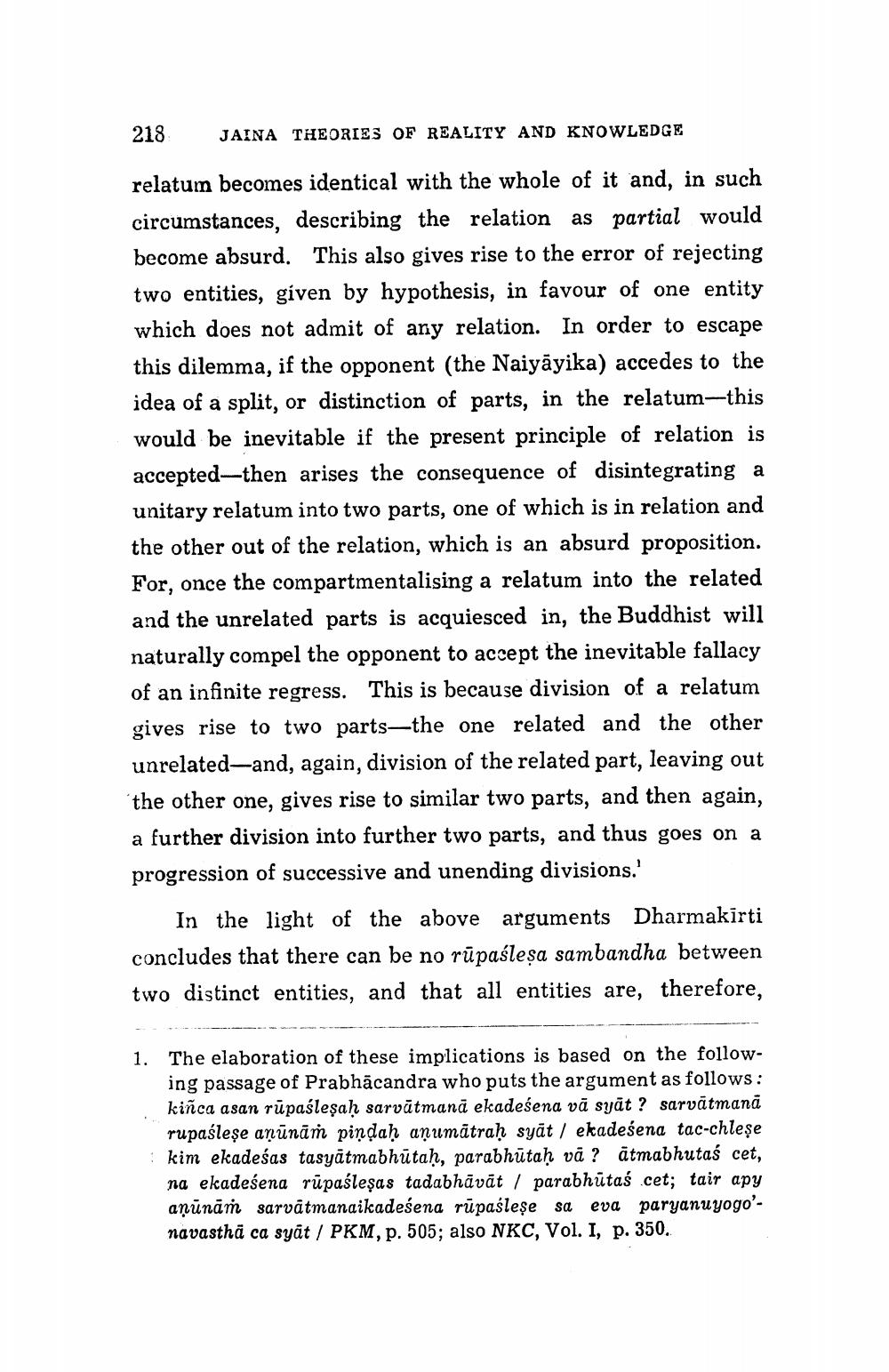________________
218
JAINA THEORIES OF REALITY AND KNOWLEDGE
relatum becomes identical with the whole of it and, in such circumstances, describing the relation as partial would become absurd. This also gives rise to the error of rejecting two entities, given by hypothesis, in favour of one entity which does not admit of any relation. In order to escape this dilemma, if the opponent (the Naiyāyika) accedes to the idea of a split, or distinction of parts, in the relatum-this would be inevitable if the present principle of relation is accepted-then arises the consequence of disintegrating a unitary relatum into two parts, one of which is in relation and the other out of the relation, which is an absurd proposition. For, once the compartmentalising a relatum into the related and the unrelated parts is acquiesced in, the Buddhist will naturally compel the opponent to accept the inevitable fallacy of an infinite regress. This is because division of a relatum gives rise to two parts—the one related and the other unrelated—and, again, division of the related part, leaving out the other one, gives rise to similar two parts, and then again, a further division into further two parts, and thus goes on a progression of successive and unending divisions.'
In the light of the above arguments Dharmakirti concludes that there can be no rūpaśleșa sambandha between two distinct entities, and that all entities are, therefore,
1. The elaboration of these implications is based on the follow
ing passage of Prabhācandra who puts the argument as follows: kiñca asan rūpaśleşaḥ sarvātmana ekadesena vā syāt? sarvātmana rupaśleşe anūnāṁ pindah anumatraḥ syāt / ekadesena tac-chleşe kim ekadeśas tasyātmabhūtaḥ, parabhūtaḥ vā? ātmabhutaś cet, na ekadeśena rūpaśleşas tadabhāvāt / parabhūtaś cet; tair apy aņūnāṁ sarvātmanaikadeśena rūpaśleşe sa eva paryanuyogo'navasthā ca syāt / PKM, p. 505; also NKC, Vol. I, p. 350.




